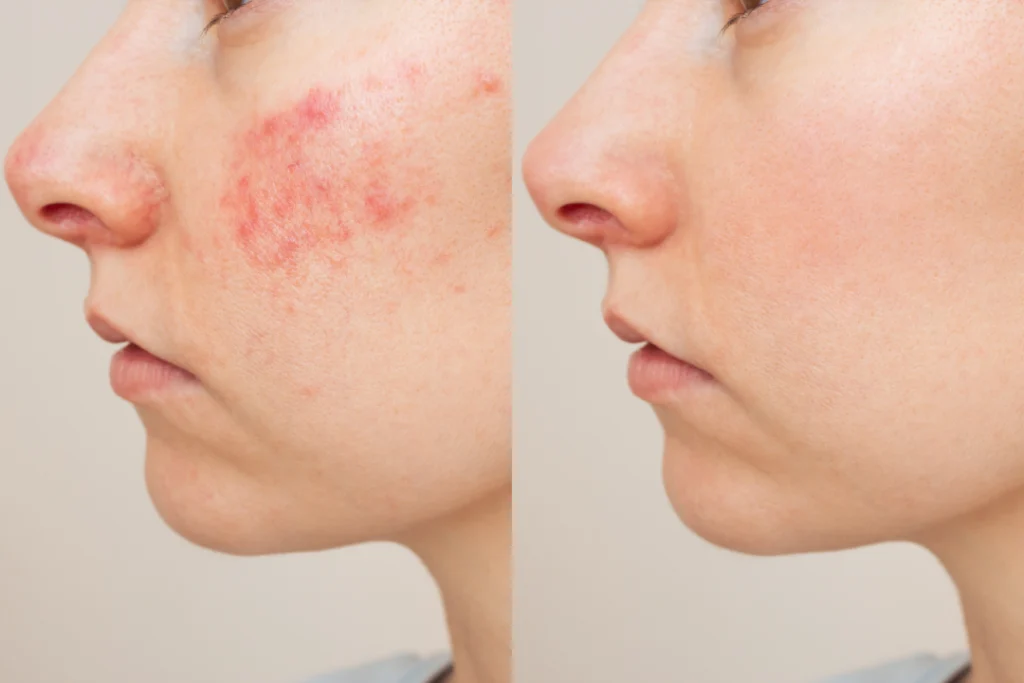As summer approaches, many of us look forward to basking in the sun and enjoying outdoor activities. However, the increased heat and humidity can pose challenges for our skin, particularly for those prone to acne.
Preparing your skin for the summer months is essential to maintaining a clear, glowing complexion. One effective strategy is incorporating an acne facial into your skincare routine. These specialized treatments not only address existing acne issues but also fortify your skin against potential summer breakouts.
Understanding Acne and Its Impact
Acne is a common skin condition that occurs when hair follicles become clogged with oil and dead skin cells, leading to pimples, blackheads, and cysts. While often associated with adolescence, acne can affect individuals of all ages.
The condition can have several negative effects:
- Physical Discomfort: Acne lesions can be painful, especially cysts and nodules that form deep beneath the skin’s surface.
- Emotional Distress: Visible acne can lead to self-consciousness, reduced self-esteem, and even anxiety or depression in some individuals.
- Scarring: Severe acne can result in permanent scars, which may require additional treatments to improve skin texture.
Addressing acne promptly is crucial to mitigating these effects. At Robert Andrews Laser and Medical Aesthetics, we offer specialized acne facials designed to treat and prevent breakouts, promoting healthier skin.
What Is an Acne Facial?
An acne facial is a targeted skincare treatment aimed at clearing clogged pores, reducing oil production, and soothing inflammation associated with acne. Unlike standard facials, acne facials focus on deep cleansing and extraction to address the root causes of acne.
Key components of an acne facial typically include:
- Deep Cleansing: Removing excess oil, dirt, and impurities from the skin’s surface to prevent pore congestion.
- Exfoliation: Utilizing chemical exfoliants like alpha-hydroxy acids (AHAs) or beta-hydroxy acids (BHAs) to slough off dead skin cells and promote cell turnover.
- Extraction: Manually clearing clogged pores of blackheads and whiteheads to reduce the occurrence of breakouts.
- Mask Application: Applying masks containing ingredients like clay or sulfur to absorb excess oil and calm inflammation.
- Hydration and Sun Protection: Moisturizing the skin to restore balance and applying sunscreen to protect against UV damage.
These steps work synergistically to purify the skin, reduce acne symptoms, and enhance overall skin health.
Effective Aftercare Tips Post-Acne Facial
An acne facial is a powerful tool for deep cleansing and preventing breakouts, but maintaining your results requires a thoughtful aftercare routine. After any professional acne treatment, your skin is in a delicate state, making it essential to follow specific aftercare steps to optimize healing and prolong the benefits.
Here are the best ways to protect your skin and maintain a clear, glowing complexion after an acne facial, especially during the warmer months:

1. Prioritize Sun Protection
Your skin is more sensitive to the sun after an acne facial due to the exfoliation and extractions performed during treatment. Applying a broad-spectrum sunscreen with at least SPF 30 is crucial in preventing UV damage, hyperpigmentation, and irritation.
Opt for a lightweight, oil-free sunscreen specifically formulated for acne-prone skin. Avoid prolonged sun exposure, especially in peak hours (10 a.m. to 4 p.m.), and wear a wide-brimmed hat if you plan to be outdoors for an extended period.
Reapply sunscreen every two hours, especially if sweating or swimming.
2. Use a Gentle Skincare Routine
Your freshly treated skin needs extra care after undergoing a deep cleansing facial. Avoid using harsh cleansers, physical scrubs, or any products containing strong active ingredients like retinoids, AHAs, or BHAs for at least 48 hours post-treatment. Instead, opt for a gentle, sulfate-free cleanser to keep your skin clean without stripping essential moisture.
Pat your face dry with a soft towel—never rub!—to prevent unnecessary irritation.
3. Keep Your Skin Hydrated
Hydration is key to healing and balancing your skin after an acne facial. Use a lightweight, non-comedogenic moisturizer to restore moisture and strengthen the skin barrier. Look for ingredients like hyaluronic acid, aloe vera, and ceramides, which provide hydration without clogging pores.
Drink plenty of water throughout the day to support skin health from the inside out, keeping your skin plump and reducing post-facial sensitivity.
4. Avoid Heavy Makeup
After an acne facial, your pores are deeply cleansed and more receptive to skincare products. However, they are also more vulnerable to clogging, so it’s best to give your skin a break from makeup for at least 24 to 48 hours.
If you need to wear makeup, opt for non-comedogenic formulas, which won’t clog pores or contribute to breakouts. Mineral-based makeup is a great option as it allows your skin to breathe while offering some sun protection.
5. Stay Cool & Avoid Excessive Sweating
SSweatcan introduce dirt and bacteria into your freshly treated pores, leading to potential breakouts. For the first 24 to 48 hours, avoid activities that induce heavy sweating, such as intense workouts, saunas, or hot yoga.
If you do sweat, gently pat (not rub) your skin dry with a clean towel or tissue to prevent irritation.
6. Skip Harsh Exfoliation
Your acne facial already includes a professional exfoliation step, so additional exfoliation can lead to over-sensitivity, redness, and irritation. Avoid using exfoliating scrubs, peels, or cleansing brushes for at least one week after your treatment.
Let your skin naturally regenerate before reintroducing these products into your routine.
7. Maintain a Balanced Diet for Clear Skin
What you eat can directly impact your skin. Post-facial, focus on a nutrient-dense diet rich in antioxidants, vitamins, and hydration. Eating plenty of fruits, vegetables, and whole foods while reducing processed sugar and dairy may help minimize breakouts.
Foods rich in omega-3 fatty acids, zinc, and probiotics can further support skin health and reduce inflammation.
8. Don’t Pick at Your Skin
One of the biggest mistakes after an acne facial is picking at or squeezing any remaining blemishes. Even if extractions were performed, some breakouts might still be healing. Touching your face with dirty hands can introduce bacteria and cause additional irritation or scarring. Let your skin heal naturally, and trust the process.

9. Follow a Nighttime Skincare Routine
Your skin repairs itself overnight, so having a soothing nighttime skincare routine is essential after an acne facial. Before bed, cleanse your skin gently, apply a hydrating serum (such as niacinamide or hyaluronic acid), and use a light moisturizer to lock in moisture.
Avoid using retinoids or strong active ingredients immediately after your facial as they may cause excessive dryness or irritation.
10. Schedule Regular Acne Facials for Long-Term Results
Consistency is key in maintaining acne-free skin. Depending on your skin’s needs, you may benefit from a monthly acne facial to keep breakouts under control, clear out congestion, and promote a smooth, radiant complexion.
Consult with your skincare professional to develop a long-term treatment plan tailored to your skin type.
Embrace Clear Skin This Summer
Achieving and maintaining clear, glowing skin is possible with the right approach. Incorporating acne facials into your skincare regimen can significantly improve skin clarity and resilience, especially during the summer months.
At Robert Andrews Laser and Medical Aesthetics in Colorado Springs, CO, our experienced team offers personalized acne facial treatments tailored to your unique skin needs. We are committed to helping you achieve your skincare goals and boost your confidence.
Ready to enhance your skin’s health and appearance? Schedule a consultation with us today to discover how our acne facial treatments can benefit you!


